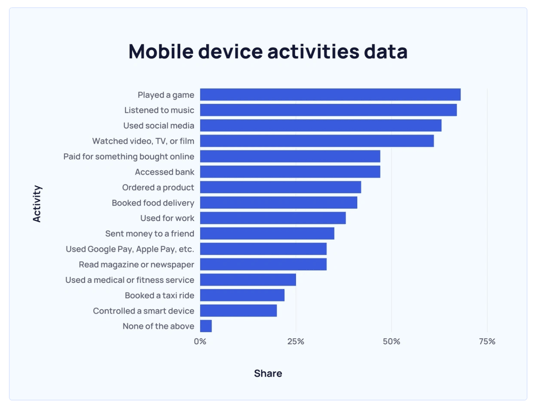Top CX Trends to Watch in 2024

As we enter 2024, the customer experience (CX) continues to transform, propelled by advanced technology and the ever-changing demands of consumers. To navigate this dynamic environment, businesses are embracing innovative strategies to not only meet but exceed customer expectations. In this blog we visit VIPdesk's top customer service trends to follow in 2024.
1. Economic conditions are still very tight for most consumers, with price, value, and making budgetary savings being the three most significant factors driving much of their behavior.

This year continues to present economic challenges for many, accompanied by fresh sources of instability and uncertainty. Nine out of ten consumers are still having their daily choices affected by inflation, with almost 70% worried about their ability to afford food and basic necessities for their families. In challenging times, customers become increasingly selective about how and with whom they spend their money. Providing an exceptional customer experience is now more crucial than ever as a key competitive advantage.
Survey data found that 89% of consumers have purchased an alternate brand in the last year and over 55% have switched retailers in pursuit of lower prices and bigger savings. This data shows that consumers will continue to shop around for better deals and keeping loyal customers will become increasingly difficult. It's not all bad news though. This means that there is always room for improvement and acquiring new customers is possible with the right strategies.
Consumers are not only looking for the best deals and good value, but are also concerned with companies sustainability. According to the 2023 Customer Loyalty Index from SAP Emarsys, in 2023, 32% of US shoppers switched brands because of their sustainability practices. In recent years, facing economic challenges, many brands have adopted tactics to help cut costs. However, savvy customers often recognize these strategies and tend to shift towards brands they perceive as supportive in budget management and aligned with their sustainability goals and values.
Takeaway: Consumers are feeling the effects of inflation and are shopping accordingly. While consumers are more selective about how and with who they spend their money, sustainability is still a growing concern when they make their buying decisions.
2. With consumers being more selective about how and with who they do business, great service and experiences still beat low prices when it comes to customer loyalty.
As we move into 2024, we are seeing a significant shift in consumer purchasing behavior, challenging the conventional wisdom that low prices are the primary motivator for consumers. Due to inflation, today's consumers are more selective than ever about where and how they engage in business transactions. This discernment goes beyond mere price sensitivity; it delves into the quality of service and the overall experience offered by a brand.

According to a study conducted by Qualtrics, the post-purchase experience is increasingly recognized as a major influencer in consumer purchasing decisions. The study highlights that 'customer service support' is a critical factor, ranking just below 'product quality' in terms of importance to consumers, and notably, it is ranked higher than 'low prices'. This insight from the Qualtrics research emphasizes the growing significance of customer service in shaping consumer preferences and buying behavior.
3. Advancements in artificial intelligence are propelling hyper-personalization as a rising trend in customer experience, anticipated to gain significant momentum in 2024.
In today's digital era, personalization is not just appreciated, but expected by customers. A one-size-fits-all approach can lead to customers feeling neglected or under appreciated. Conversely, hyper-personalization, which focuses on recognizing and catering to the individual preferences of each customer, can significantly enhance satisfaction and promote loyalty to the brand.
However, personalization extends beyond merely addressing customers by their names. It encompasses a deeper understanding and application of individual preferences and needs. In today's market, trust is an invaluable asset. When executed effectively, hyper-personalization can bolster this trust by demonstrating to customers that their needs are both understood and valued. Such trust fosters enduring loyalty and advocacy. In fact, 62% of business leaders recognize customer retention as a primary advantage of personalization efforts.
Top Personalization stats of 2024
- 90% of leading marketers say personalization significantly contributes to business profitability (Google).
- Customers want businesses to understand their individual requirements and expectations, while 66% feel they are often treated like numbers (Salesforce).
-
91% of consumers are more likely to shop with brands that recognize, remember, and provide relevant offers and recommendations (Accenture).
-
Companies that thrive at personalization earn 40% more money from these activities than the average competitor (McKinsey).
4. In the midst of AI advancements and automation, Human Touch remains a cornerstone of good cx. Human connection is the foundation of a winning AI strategy.
In the rapidly evolving landscape of AI advancements and automation, the Human Touch continues to be a pivotal element of outstanding customer experience (CX). Despite the efficiency and scalability offered by AI and automation, the essence of human interaction remains irreplaceable. According to the 2023 CX/EX Report by NTT, an overwhelming majority of executives, eight out of ten, concur that human-led support is a crucial component of employee experience (EX). This statistic underscores a significant trend in organizational management and customer service strategy, emphasizing the enduring importance of human interaction and leadership in the workplace. Despite the rise of automated systems and AI-driven solutions, the human element remains integral to fostering a positive and effective employee environment, ultimately reflecting in the quality of customer experience.
Consumers are increasingly aware of the critical role that human involvement plays in reducing bias and ensuring the quality of training data for AI algorithms. A notable statistic from TELUS International highlights this understanding: 49% of consumers believe that AI algorithms require human input to function effectively. This perspective underscores the essential partnership between human oversight and AI technology in achieving successful outcomes.
Research by Qualtrics indicates that consumers remain ambivalent about AI, primarily due to concerns that it might supplant the human connections they value. This preference for human interaction is also evident in their choice of communication channels. Most consumers still favor engaging with human-operated channels over digital ones, particularly for complex or high-stakes tasks such as resolving billing issues. However, for more straightforward, transactional activities like checking the status of an order, digital channels are preferred. This trend highlights the importance of maintaining a balance between digital efficiency and the irreplaceable human touch in customer service.
5. Self-service support Boom
The customer support landscape is witnessing a significant surge in self-service options, marking a pivotal trend in our CX (Customer Experience) observations. This 'self-service boom' is driven by a growing consumer preference for quick, convenient, and autonomous solutions to their queries and issues. Advances in technology have enabled businesses to offer sophisticated self-service platforms, such as AI-powered chatbots, intuitive knowledge bases, and interactive FAQs, that empower customers to find solutions at their own pace and convenience.
Currently, a significant 67% of customers show a preference for using self-service options instead of engaging directly with company representatives. Additionally, a substantial 91% of customers express a willingness to utilize an online knowledge base, provided it is accessible and customized to meet their specific requirements. This trend indicates a strong inclination among customers towards independently seeking out solutions.

6. Change in engagement (how consumers interact with brands) (are you listening?
As we navigate through 2024, there's a noticeable evolution in how consumers engage with brands, reflecting a significant shift in customer engagement dynamics. Today's consumers are not just passive recipients of marketing messages; they are active participants in brand narratives.
The rise of social media and digital platforms has given consumers a powerful voice, enabling them to initiate conversations, share feedback in real-time, and influence brand perceptions more directly and publicly than ever before. Moreover, there's a growing expectation for brands to listen and respond, not just through traditional customer service channels but also via social media and other interactive platforms. This change signifies a move towards a more dialogue-driven relationship between consumers and brands, where listening and responding appropriately to customer needs, preferences, and values become critical for brand success.
Companies that adeptly navigate this new landscape of customer engagement, valuing and incorporating consumer input, are the ones most likely to thrive in this changing environment.
Here's what you need to know:
- Social media is the #1 channel U.S. consumers prefer to use to engage with brands, especially among Gen Z consumers, surpassing other channels like email, website chat, telephone, or visiting a physical store (Emplifi)
- Brands that have mastered customer engagement were 41% more likely to report their conversion rates as “much higher” compared to the previous year. (Twilio)
- 88% of consumers trust online reviews as much as personal recommendations. (Verint)
7. Improved Mobile Support (growth of mobile traffic)
Over 55% of website traffic comes from mobile devices. Customers have become increasingly mobile and self-reliant. This change necessitates a significant adaptation in customer experience (CX) strategies. Businesses need to ensure that their digital platforms are optimized for mobile use, offering intuitive, self-service tools that empower customers to easily access information, solve problems, and make decisions on-the-go. The emphasis is now on creating seamless, user-friendly mobile experiences that align with the evolving lifestyle of the modern, mobile-centric consumer.
Here are the 16 most common tasks that people perform using their smartphones:

8. Proactive Customer Support
The landscape of customer service is witnessing a dynamic shift from a reactive approach to a more proactive one, a trend that is quickly gaining traction. Instead of relying solely on customers to initiate contact regarding issues, companies are increasingly adopting social listening tools. These tools enable businesses to actively monitor and analyze customer feedback, concerns, and sentiments expressed across different social media platforms. By doing so, they are positioned to anticipate potential issues and intervene early, often before the customer is even aware of a problem. This proactive stance not only streamlines issue resolution but also significantly improves the overall customer experience. It demonstrates a proactive dedication to customer satisfaction, going beyond traditional service methods to deliver a more attentive and responsive customer journey.
A significant majority of customers, exceeding 85%, express a desire for proactive communication and engagement from businesses. This statistic highlights a clear preference among consumers for companies that take the initiative in reaching out, whether it's for updates, issue resolutions, or providing relevant information.
As we wrap up our exploration of the top customer experience (CX) trends for 2024, it's clear that the landscape is rapidly evolving. From the increasing demand for personalized, mobile-optimized interactions to the shift towards proactive customer service, businesses must adapt to these emerging preferences and expectations. The rise of self-service options, coupled with the strategic use of social listening tools, reflects a deeper understanding of the modern consumer's desire for autonomy, convenience, and immediate resolution. Furthermore, the enduring importance of the human element in customer interactions remains a cornerstone, even in an age dominated by digital advancements. As we move forward, these trends not only highlight the changing dynamics of customer engagement but also underscore the need for businesses to remain agile, customer-centric, and technologically adept to thrive in the competitive landscape of 2024 and beyond.
More from VIPdesk




.png)